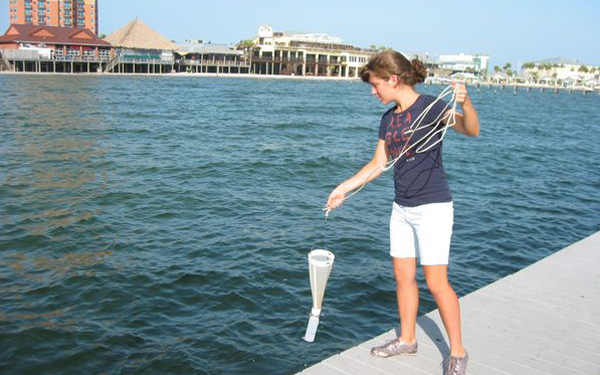Factors Controlling the Success of Transplanted Seagrass in Pensacola Bay
Funding by NOAA through Florida DEP

PI: Jane M. Caffrey
The Florida Panhandle has suffered significant submerged aquatic vegetation (SAV) loss since the 1950’s due to dredging operations (EPA 2007) and industrial wastewater discharges into local estuary systems (EPA 2005). As a result, the productivity and habitat function of local estuaries have been decreased. Within the last decade, environmental regulations have been implemented resulting in water quality improvements allowing for seagrass restoration in some areas within panhandle systems. This project examines sediment (porewater) biogeochemistry within the Pensacola Bay System to determine the sediment nutrient condition of natural beds of H. wrightii and T. testudinium, sediment nutrient condition of historical coverage areas but presently devoid of SAV, and sediment nutrient composition changes related to R. maritima colonization and its impact on promoting H. wrightii colonization. Data from the first year of sampling and analysis suggests that R. maritima does have an effect on sediment porewater nutrient composition.
Sampling occurs at four locations:
Bruce’s Beach (R. maritima and H. wrightii), Big Lagoon (T. testudinum and H. wrightii), Escribano Point (R. maritime), Escambia Bay (R. maritime).
A variety of parameters are measured monthly:
1) Water quality parameters: Temperature, salinity, DO, pH
2) Light attenuation in the water column
3) Nutrients: water column (nitrate, ammonium, phosphate) and sediment (ammonium, phosphate)
4) Chlorophyll concentrations: water column and epiphyte
5) Pore water hydrogen sulfide
6) Coverage estimates using Braun-Blanquet


